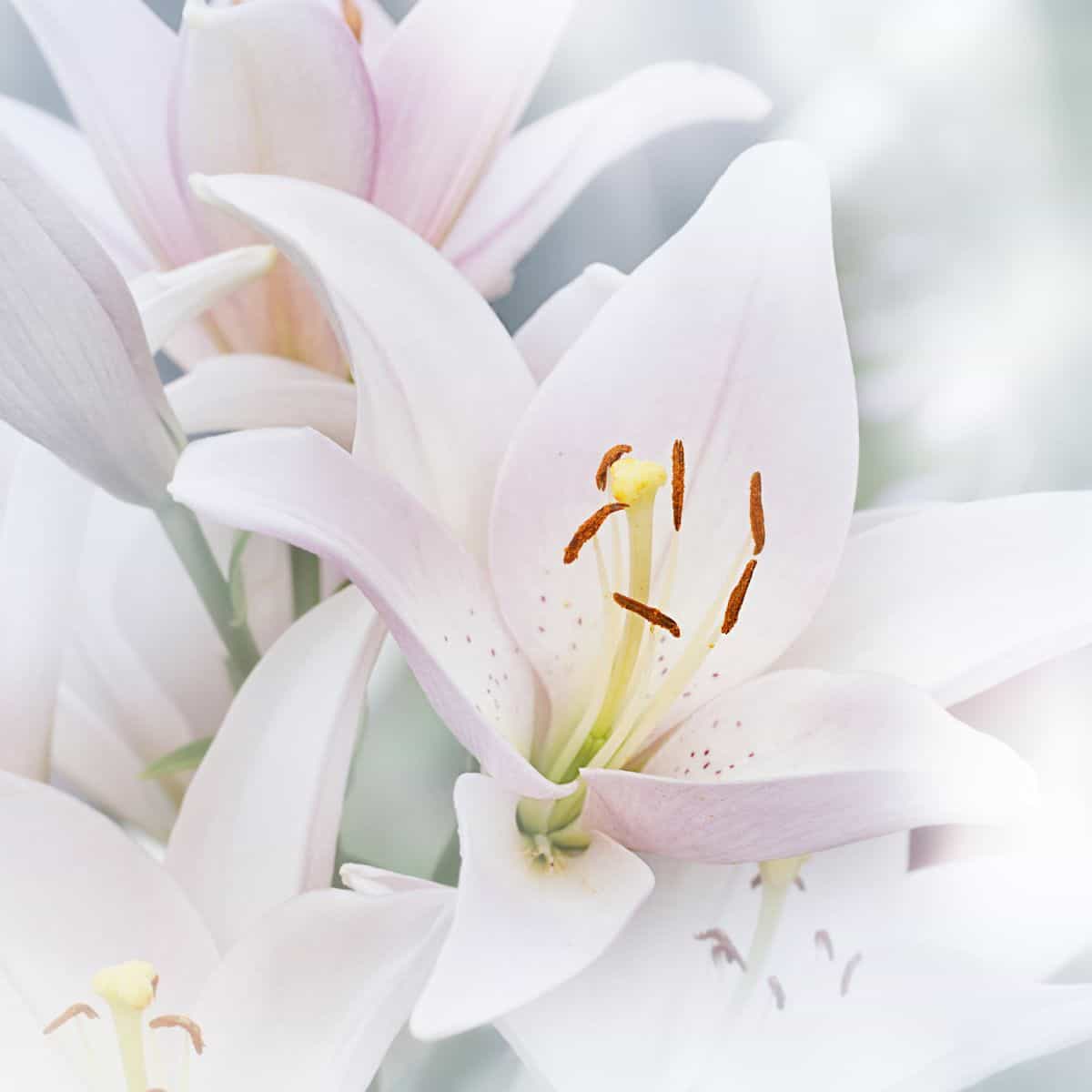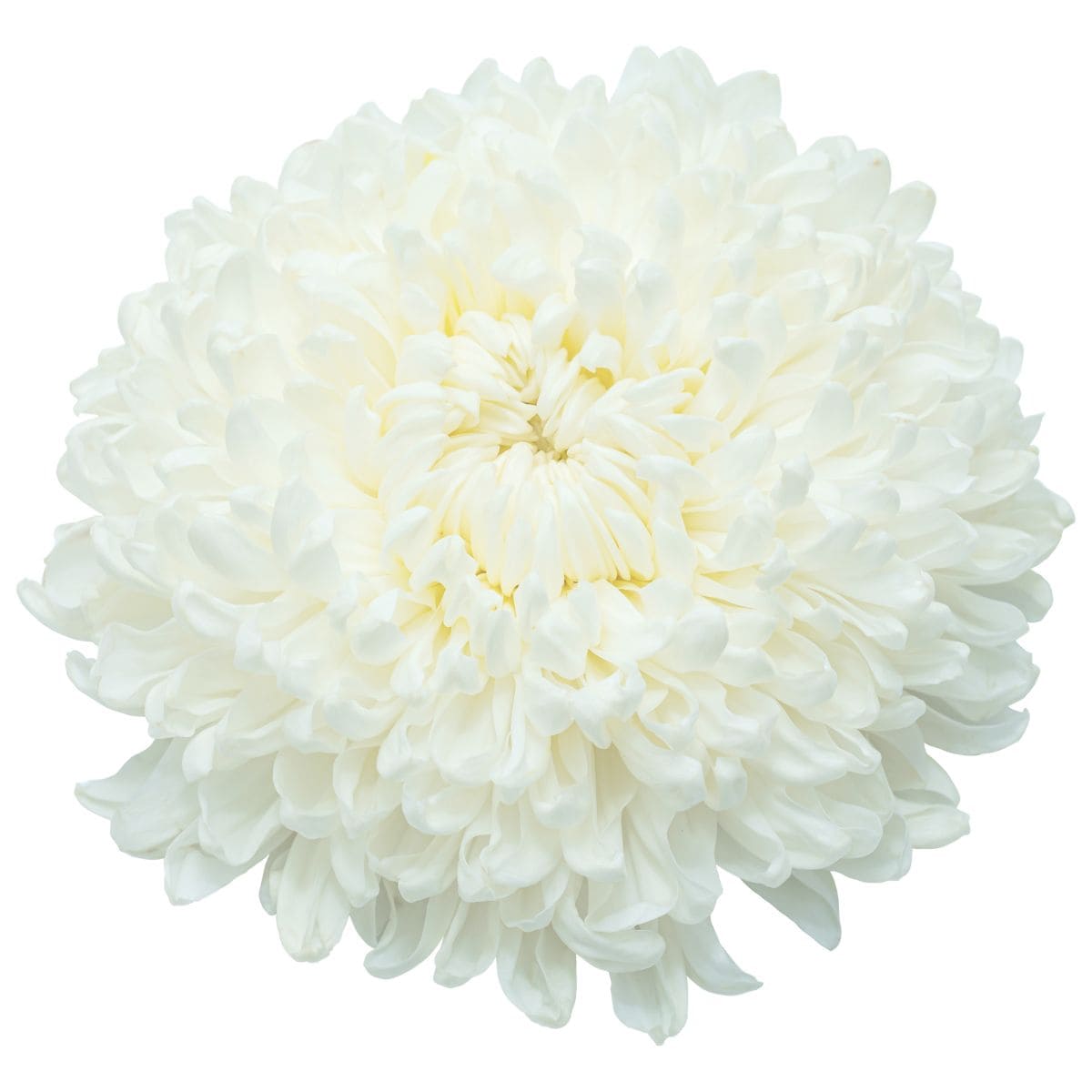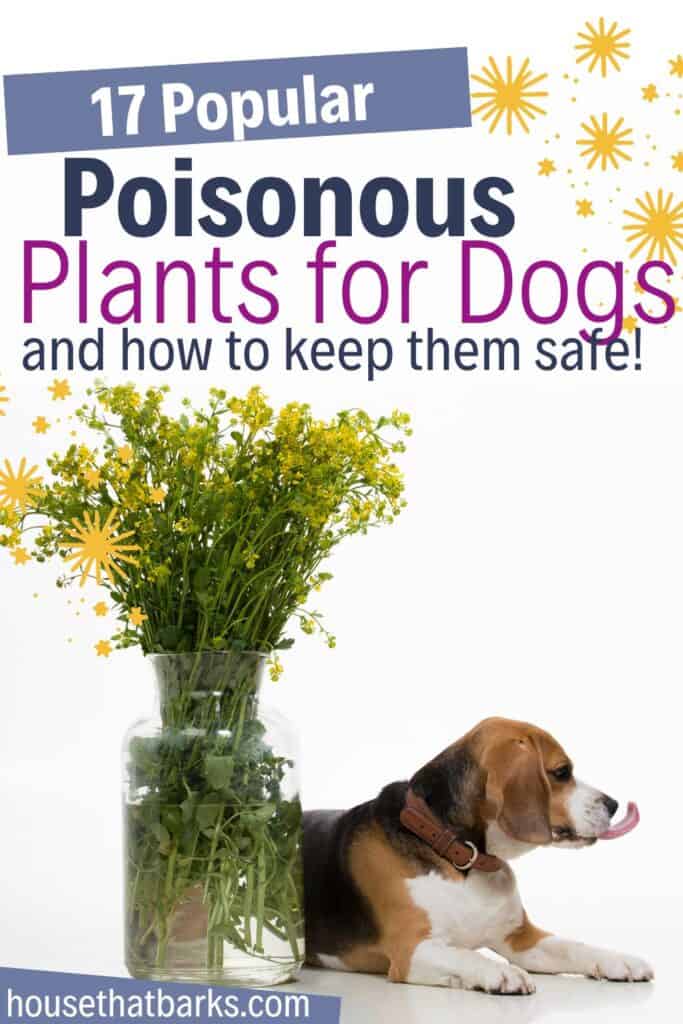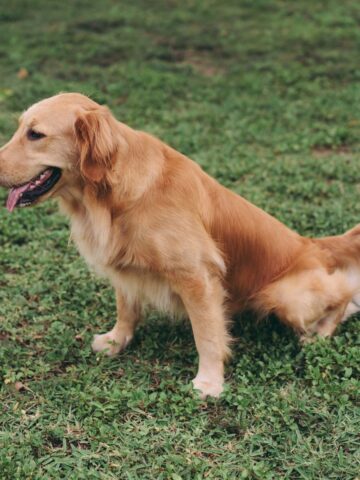By knowing the most poisonous plants for dogs can help you keep your canine companions safe while in the yard.
Most Poisonous Plants for Dogs
While dogs have been mans best friend for thousands of years, it's important to keep them safe outside in their yards.
Dog's love to eat everything and anything, and a common threat to their health are poisonous plants in the garden.
The good news is that the ASPCA has a list of poisonous, toxic and dangerous plants to avoid.
Below are plants that even though they live in a lot of households, they should be incorporated with caution into your home for not only your children but your pets as well.
Some poisonous plants can cause acute symptoms, like vomiting.
Others can irritate the skin or cause severe life-threatening effects if consumed by pets or children.
The list below is not meant to be complete.
ASCPA List of Poisonous Plants for Dogs
Lilies a Popular but Poisonous Plants for Dogs

We consider members of the Lilium to be highly toxic to cats.
- While they have not yet identified the poisonous component, with even ingestions of tiny amounts of the plant, severe kidney damage could result.
Marijuana
Ingestion of Cannabis sativa by companion animals can cause depression of the central nervous system.
- This includes and incoordination, and vomiting, diarrhea, drooling, increased heart rate, and even seizures and coma.
Sago Palm
All parts of the Sago Palm are poisonous, but the seeds or "nuts" contain the largest amount of toxin.
- Ingesting just one or two seeds can cause very serious effects, which include vomiting, diarrhea, depression, seizures and liver failure.
Tulips Narcissus Bulbs
The bulb portions of Tulips/Narcissus Bulbs contain toxins that can cause intense gastrointestinal irritation.
- Tulips can also cause drooling, loss of appetite, depression of the central nervous system, convulsions, and cardiac abnormalities.
Azalea/Rhododendron
Members of the Rhododendron contain substances known as grayanotoxins.
- This can produce vomiting, drooling, diarrhea, weakness and depression of the central nervous system in animals.
- Severe azalea poisoning could ultimately lead to coma and death from cardiovascular collapse.
Oleander
All parts of the Oleander are considered being toxic, as they contain cardiac glycosides that have the potential to cause serious effects.
- This includes gastrointestinal tract irritation, abnormal heart function, hypothermia and even death.
Castor Bean
The poisonous principle in Castor Bean Plants is ricin, a highly toxic protein.
- This protein can produce severe abdominal pain, drooling, vomiting, diarrhea, excessive thirst, weakness and loss of appetite.
- Severe cases of poisoning can result in dehydration, muscle twitching, tremors, seizures, coma, and death.
Cyclamen
Cyclamen species contain Cyclamen, but the highest concentration of this toxic component is typically in the root portion of the plant.
- If consumed, Cyclamen can produce significant gastrointestinal irritation, including intense vomiting.
Fatalities have also been reported in some cases.
Kalanchoe
Kalanchoe contains components that can produce gastrointestinal irritation.
- These are toxic to the heart, and can seriously affect cardiac rhythm and rate.
Yew
The Yew Plant contains a toxic component known as taxine, which causes central nervous system.
- This causes trembling, incoordination, and difficulty breathing.
- Yew can also cause significant gastrointestinal irritation and cardiac failure, which can cause death.
Amaryllis
Common garden plants popular around Easter is Amaryllis plant.
- The Amaryllis plant contains toxins that can cause vomiting, depression, diarrhea, abdominal pain, hypersalivation, anorexia, and tremors.
Autumn Crocus
Ingestion of an Autumn Crocs by a dog can cause oral irritation, bloody vomiting, diarrhea, shock, multi-organ damage and bone marrow suppression.
More Poisonous Plants for Dogs
Chrysanthemum

These popular blooms are part of the Compositate family, which contain pyrethrins that may produce gastrointestinal upset, including drooling, vomiting, and diarrhea if eaten.
- In certain cases, depression and loss of coordination may also develop if enough of any part of the plant is consumed.
English Ivy a Household Poisonous Plants for Dogs
Also called branching Ivy, Glacier Ivy, Needletpoint Ivy, Sweetheart Ivy or California Ivy.
- The Ivy plant contains triterpenoid saponins that, should a dog ingest, can cause vomiting, abdominal pain, hypersalivation, and diarrhea.
Peace Lily
The Peace Lily contains calcium oxalate crystals.
- This can cause oral irritation, excessive drooling, vomiting, difficulty in swallowing and intense burning and irritation of the mouth, lips, and tongue in pets who ingest.
Pothos
The Pothos plant (both Scindapsus and Epipremnum) belongs to the Araceae family.
- If chewed or ingested, this popular household plant can cause significant mechanical irritation and swelling of the oral tissues and other parts of the gastrointestinal tract.
Schefflera
Both the Schefflera and Brassaia Actinophylla contains calcium oxalate crystals.
- These can cause oral irritation, excessive drooling, vomiting, difficulty in swallowing and intense burning and irritation of the mouth, lips, and tongue in pets who ingest.
Take your pets to the Veterinarian if you suspect your dog or cat has eaten any plants that could be poisonous.
Symptoms of Plant Poisoning in Dogs
When it comes to plant poisoning in dogs, it is important for pet owners to recognize the symptoms that may indicate your canine companion has ingested a toxic plant.
These symptoms can vary depending on the specific plant and the amount consumed, but common signs include:
- Gastrointestinal issues such as vomiting or diarrhea.
- Abdominal Pain - discomfort and bloating.
- Neurological Symptoms - tremors, seizures, or even paralysis.
- Excessive Drooling - Excessive thirst.
- Difficulty breathing
- Changes in heart rate
Importance of Keeping Plants Away
Creating a safe environment for our furry friends should be a top priority, and keeping plants away plays a crucial role as a dog mom or dad.
Many plants can pose a serious threat to dogs, causing a range of health issues from mild irritation to severe toxicity.
By proactively removing and keeping plants that are known to be harmful away from our furry friends, we can significantly reduce the risk of accidental ingestion or contact with toxic substances.
This simple yet essential step can help prevent potential emergencies, unnecessary veterinary visits, and ultimately protect our beloved dogs from harm.
Final Thoughts on Poisonous Plants for Dogs
In conclusion, while many plants can add beauty to our homes and gardens, it's important to thoroughly research any new additions to make sure they are safe for our dogs.
If a dog does ingest a toxic plant, it's best to seek veterinary care immediately.
By being proactive and educated about poisonous plants for dogs, we can keep our beloved pets safe and healthy.
Poison Control Contact Information
If you suspect your dog to have eaten or
ASPCA Animal Poison Control Center
1-888-4-ANI-HELP
http://www.napcc.aspca.org






Braden says
No 16 and 17 plant names are the wrong way around.